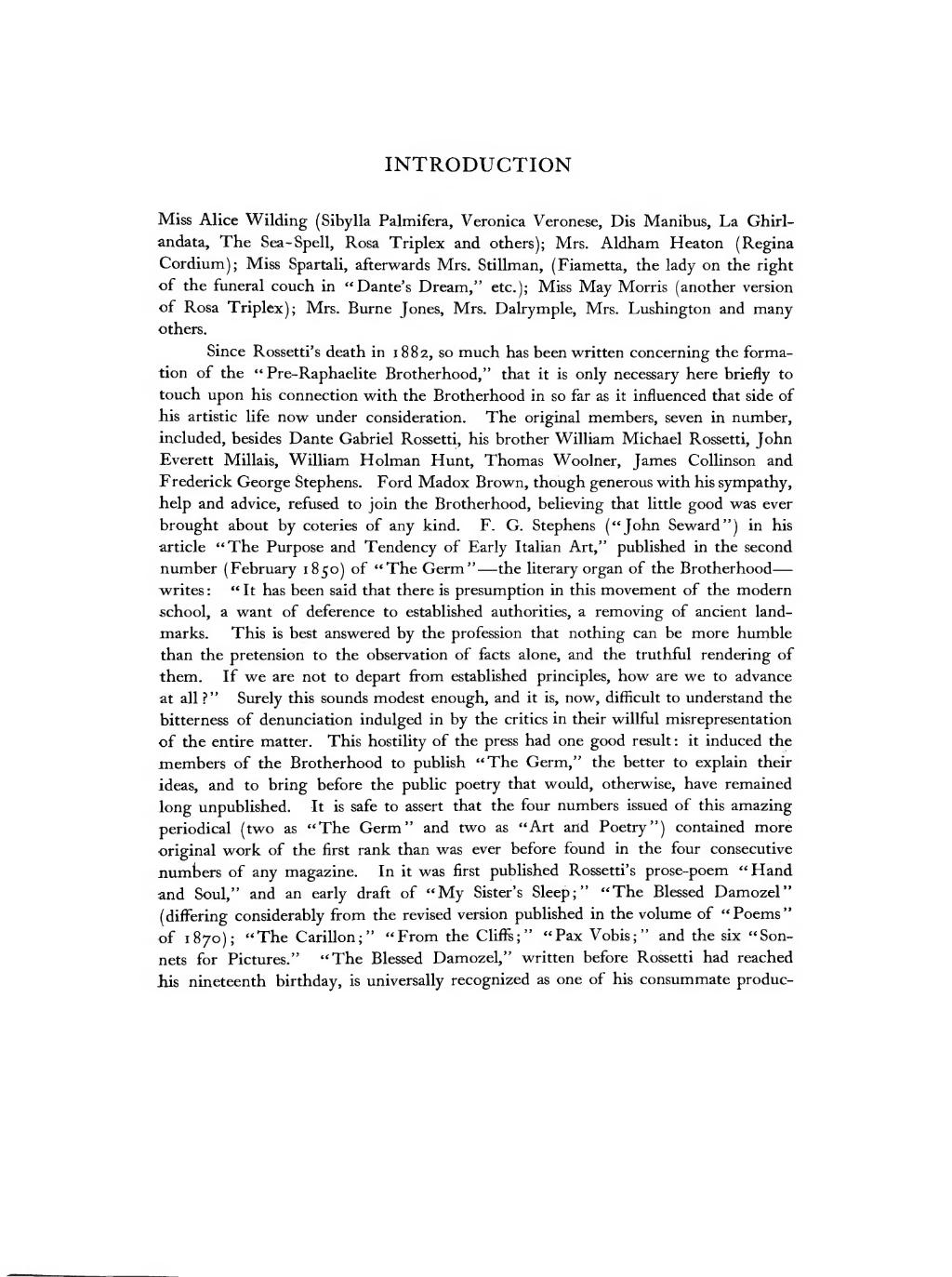INTRODUCTION
Miss Alice Wilding (Sibylla Palmifera, Veronica Veronese, Dis Manibus, La Ghirlandata, The Sea-Spell, Rosa Triplex and others); Mrs. Aldham Heaton (Regina Cordium); Miss Spartali, afterwards Mrs. Stillman, (Fiametta, the lady on the right of the funeral couch in "Dante's Dream," etc.); Miss May Morris (another version of Rosa Triplex); Mrs. Burne Jones, Mrs. Dalrymple, Mrs. Lushington and many others.
Since Rossetti's death in 1882, so much has been written concerning the formation of the "Pre-Raphaelite Brotherhood," that it is only necessary here briefly to touch upon his connection with the Brotherhood in so far as it influenced that side of his artistic life now under consideration. The original members, seven in number, included, besides Dante Gabriel Rossetti, his brother William Michael Rossetti, John Everett Millais, William Holman Hunt, Thomas Woolner, James Collinson and Frederick George Stephens. Ford Madox Brown, though generous with his sympathy, help and advice, refused to join the Brotherhood, believing that little good was ever brought about by coteries of any kind. F. G. Stephens ("John Seward") in his article "The Purpose and Tendency of Early Italian Art," published in the second number (February 1850) of "The Germ"—the literary organ of the Brotherhood—writes: "It has been said that there is presumption in this movement of the modern school, a want of deference to established authorities, a removing of ancient landmarks. This is best answered by the profession that nothing can be more humble than the pretension to the observation of facts alone, and the truthful rendering of them. If we are not to depart from established principles, how are we to advance at all?" Surely this sounds modest enough, and it is, now, difficult to understand the bitterness of denunciation indulged in by the critics in their willful misrepresentation of the entire matter. This hostility of the press had one good result: it induced the members of the Brotherhood to publish "The Germ," the better to explain their ideas, and to bring before the public poetry that would, otherwise, have remained long unpublished. It is safe to assert that the four numbers issued of this amazing periodical (two as "The Germ" and two as "Art and Poetry") contained more original work of the first rank than was ever before found in the four consecutive numbers of any magazine. In it was first published Rossetti's prose-poem "Hand and Soul," and an early draft of "My Sister's Sleep;" "The Blessed Damozel" (differing considerably from the revised version published in the volume of "Poems" of 1870); "The Carillon;" "From the Cliffs;" "Pax Vobis;" and the six "Sonnets for Pictures." "The Blessed Damozel," written before Rossetti had reached his nineteenth birthday, is universally recognized as one of his consummate produc-
